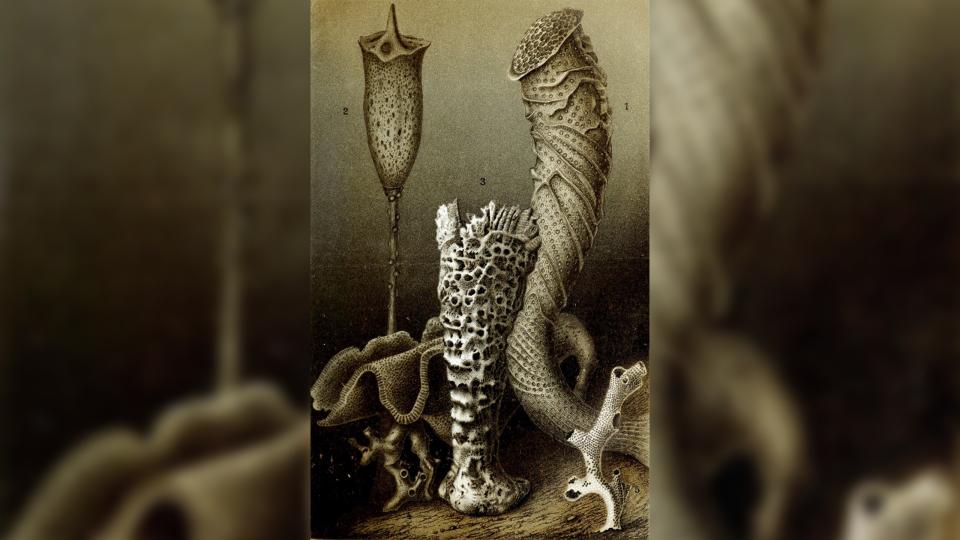Tortoises don’t even make the top 10 longest-living animals.
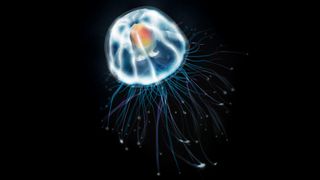
A Turritopsis dohrnii, or immortal jellyfish (Image credit: Adisha Pramod / Alamy Stock Photo)Jump to:
- Seychelles giant tortoise
- Red sea urchins
- Bowhead whale
- Rougheye rockfish
- Freshwater pearl mussel
- Greenland shark
- Tubeworm
- Ocean quahog clam
- Black coral
- Glass sponge
- Turritopsis dohrnii
- Hydra
The longest-living animals are equipped with traits to hold off, and sometimes even stop or reverse, the aging process. While humans may have an “absolute limit” of 150 years, this is just a blink of an eye compared with the centuries and millennia that some animals live through.
The true age champions live in water, often at great depths where conditions are stable and consistent. Scientists can’t record the birth and death of every member of a species, so they typically estimate maximum life spans based on what is known about a species’ biology. From old to oldest, here are 12 of the longest-living animals in the world today.
12. SEYCHELLES GIANT TORTOISE: 190+ YEARS OLD
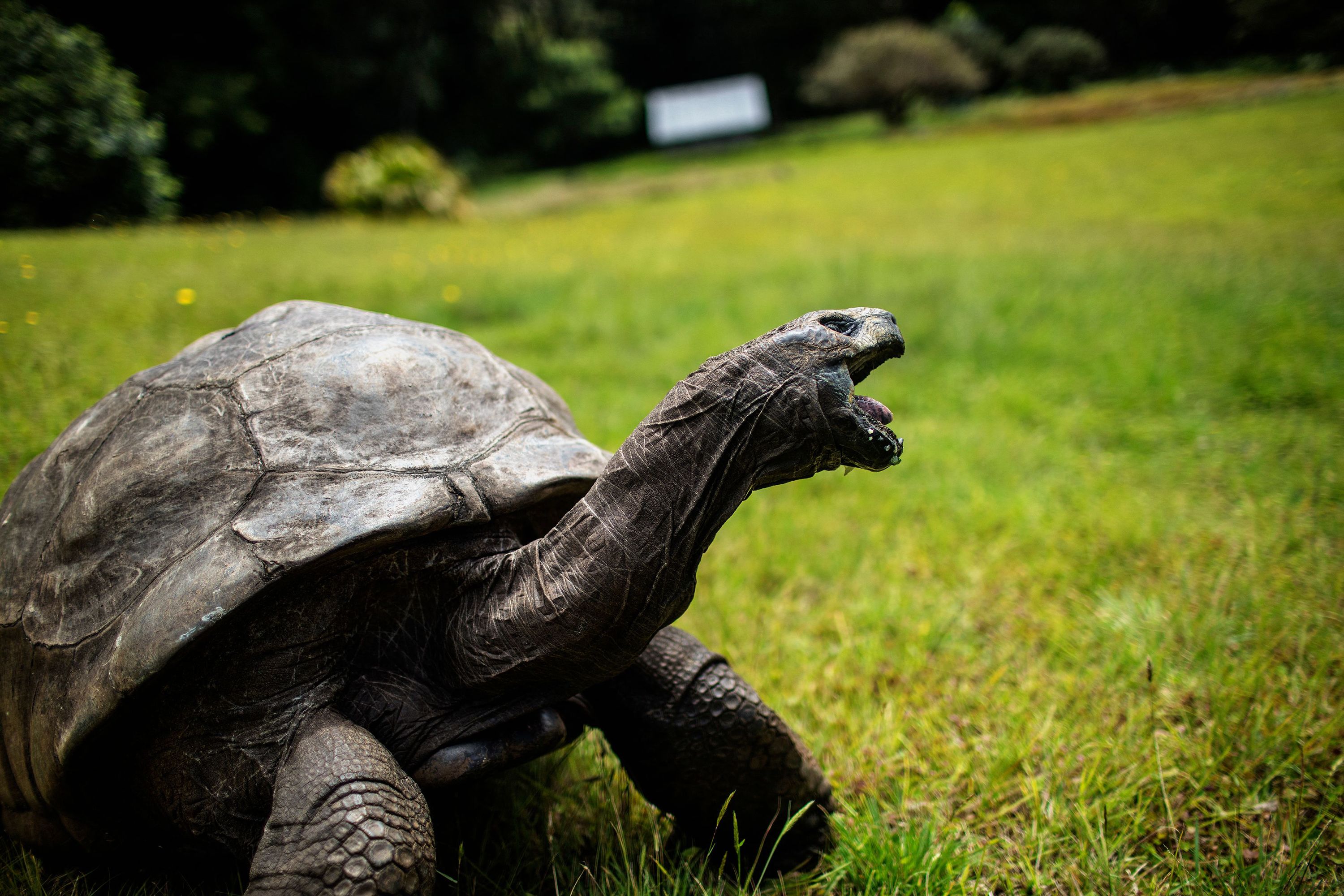
A 2017 photo of Jonathan, a Seychelles giant tortoise thought to be the oldest reptile living on Earth. Jonathan lives on Saint Helena, a British Overseas Territory in the South Atlantic Ocean. (Image credit: Gianluigi Guercia/AFP via Getty Images)(opens in new tab)
Tortoises are famed for their longevity. The oldest living land animal is a 190-year-old Seychelles giant tortoise (Aldabrachelys gigantea hololissa) named Jonathan. The tortoise lives on the island of St. Helena in the South Atlantic Ocean after having been brought there by people from the Seychelles in 1882. Jonathan’s age is an estimate, but a photograph of him taken between 1882 and 1886 shows he was fully mature — at least 50 years old — in the late 19th century, Live Science previously reported.
Sponsored LinksIf You Suffer From Toenail Fungus Try This Tonight (It’s Genius!)WellnessGuide101.com
On Jan. 12, 2022, Guinness World Records(opens in new tab) announced that Jonathan was the oldest tortoise ever. “He is a local icon, symbolic of persistence in the face of change,” Joe Hollins, Jonathan’s veterinarian, told Guinness World Records at the time.
Ads by 0 seconds of 1 minute, 57 secondsVolume 0% PLAY SOUND
Giant tortoises need to live a long time so they can breed repeatedly and produce plenty of eggs, because many of their eggs are eaten by predators. Their ability to quickly kill off damaged cells that normally deteriorate with age may help tortoises live so long, Live Science previously reported.
11. RED SEA URCHINS: 200 YEARS OLD
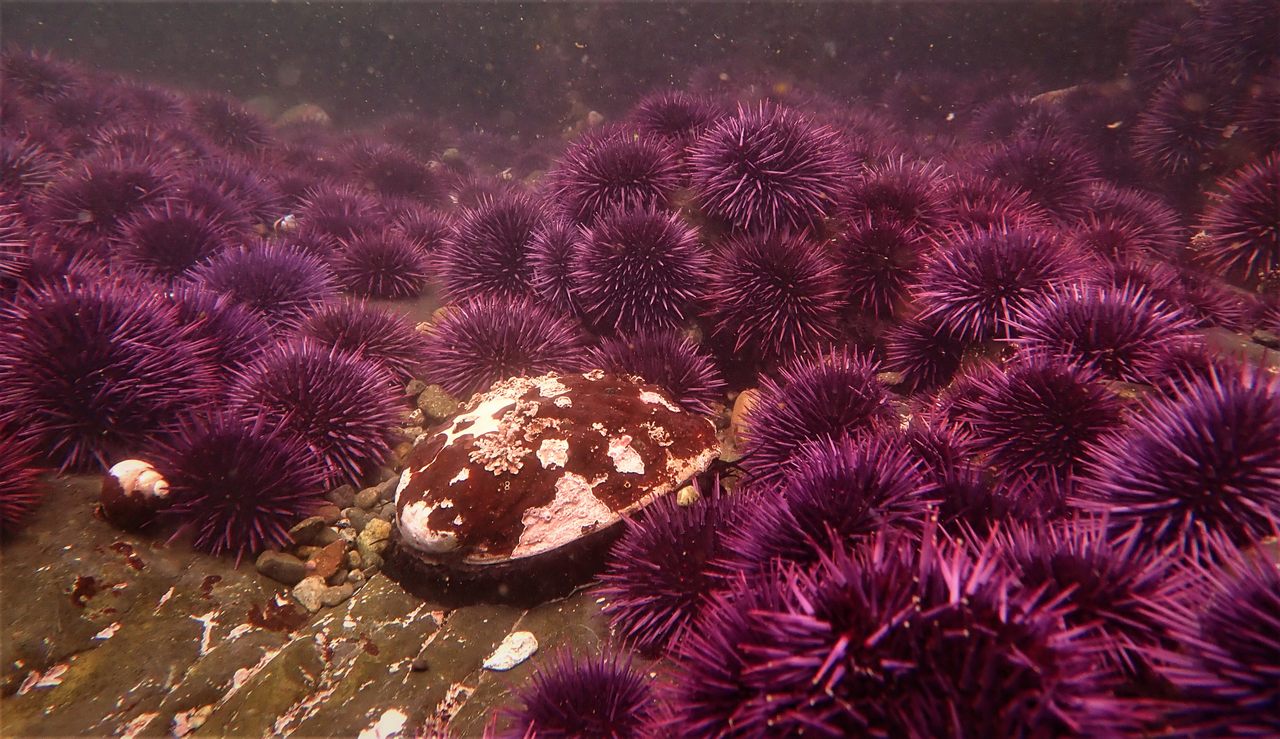
(Purple sea urchins (Strongylocentrotus purpuratus) and red sea urchins (Mesocentrotus franciscanus). in Van Damme State Park, California. (Image credit: Brent Durand via Getty Images)(opens in new tab)
Red sea urchins (Strongylocentrotus franciscanus) are small, round invertebrates covered in spines. They live in shallow coastal waters off North America from California to Alaska, where they feed on marine plants, according to Oregon State University(opens in new tab). Researchers used to assume that red sea urchins grew quickly and had modest life spans of up to about 10 years, but as scientists studied the species in more detail, they realized these urchins continue to grow very slowly and, in some locations, will survive for centuries if they can avoid predators, disease and fishers.
The red sea urchins found off Washington and Alaska probably live more than 100 years, and the longest-living individuals in British Columbia, Canada, may be around 200 years old, according to a 2003 study published in the journal Fishery Bulletin(opens in new tab).
10. BOWHEAD WHALE: POTENTIALLY 200+ YEARS OLD
A bowhead whale breaches in waters near the Qikiqtaaluk Region in Nunavut, northern Canada. (Image credit: Kelvin Aitken / VWPics / Alamy Stock Photo)(opens in new tab)
Bowhead whales (Balaena mysticetus) are the longest-living mammals. The Arctic and sub-Arctic whales’ exact life span is unknown, but stone harpoon tips found in some harvested individuals prove that they comfortably live over 100 years and may live more than 200 years, according to the National Oceanic and Atmospheric Administration(opens in new tab) (NOAA).
The whales have mutations in a gene called ERCC1, which is involved with repairing damaged DNA, that may help protect the whales from cancer, a potential cause of death. Furthermore, another gene, called PCNA, has a section that has been duplicated. This gene is involved in cell growth and repair, and the duplication could slow aging, Live Science previously reported.
9. ROUGHEYE ROCKFISH: 200+ YEARS OLD
A rougheye rockfish (Sebastes aleutianus), also known as the blackthroat rockfish or the blacktip rockfish. (Image credit: Adisha Pramod / Alamy Stock Photo)(opens in new tab)
The rougheye rockfish (Sebastes aleutianus) is one of the longest-living fish, with a maximum life span of at least 205 years, according to the Washington Department of Fish and Wildlife(opens in new tab). These pink or brownish fish live in the Pacific Ocean from California to Japan. They grow up to 38 inches (97 centimeters) long and eat other animals, such as shrimp and smaller fish, according to the Committee on the Status of Endangered Wildlife in Canada(opens in new tab), an independent advisory panel that assesses the statuses of species threatened with extinction in Canada.
A 2021 study published in the journal Science(opens in new tab) looked at the genomes of 88 rockfish species, including rougheye rockfish, and found genetic calling cards for longevity, including DNA repair pathways that may help ward off cancers. A longer life span allows the rockfish to grow larger and produce more young.
8. FRESHWATER PEARL MUSSEL: 250+ YEARS OLD

Freshwater pearl mussels (Margaritifera margaritifera) are bivalves that filter particles of food from the water. They live mainly in rivers and streams and can be found in Europe and North America. The oldest known freshwater pearl mussel was 280 years old, according to the World Wildlife Fund for Nature(opens in new tab). These invertebrates have long life spans thanks to their low metabolism.
Freshwater pearl mussels are an endangered species. Their population is declining due to a variety of human-related factors, including damage and changes to the river habitats they depend on, according to the International Union for Conservation of Nature(opens in new tab).
7. GREENLAND SHARK: 272+ YEARS OLD
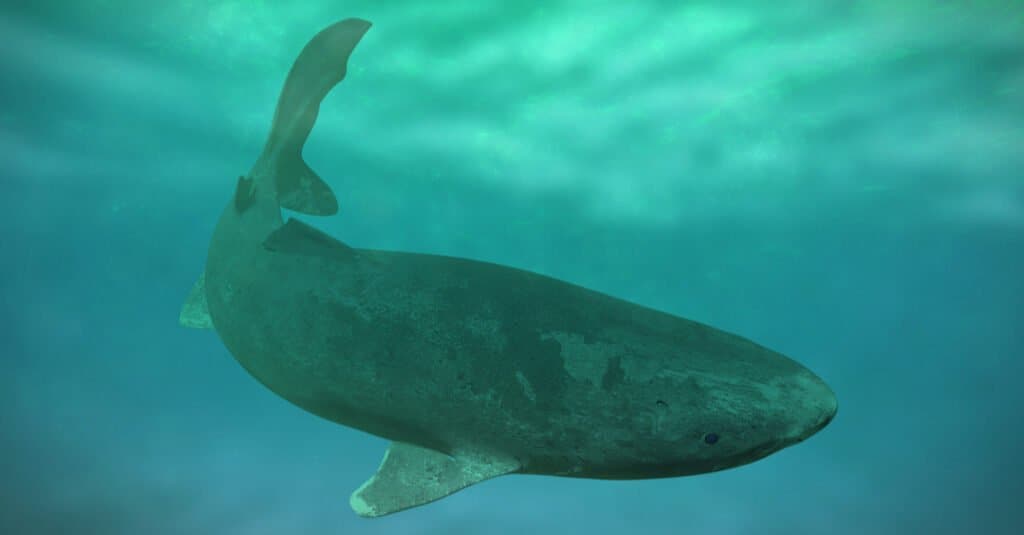
A Greenland shark swimming in the St. Lawrence River estuary in Canada. (Image credit: Doug Perrine/Alamy Stock Photo)(opens in new tab)
Greenland sharks (Somniosus microcephalus) live deep in the Arctic and North Atlantic oceans. They can grow to be 24 feet (7.3 meters) long and have a diet that includes a variety of other animals, including fish and marine mammals such as seals, according to the St. Lawrence Shark Observatory(opens in new tab) in Canada.
A 2016 study of Greenland shark eye tissue, published in the journal Science(opens in new tab), estimated that these sharks can have a maximum life span of at least 272 years. The biggest shark in that study was estimated to be about 392 years old, and the researchers suggested that the sharks could have been up to 512 years old, Live Science previously reported. The age estimates came with a degree of uncertainty, but even the lowest estimate of 272 years still makes these sharks the longest-living vertebrates on Earth.
Related: 100-year-old Greenland shark that washed up on UK beach had brain infection, autopsy finds
Ancient Greenland Shark Off Baffin IslandA large Greenland shark swims up to a baited camera deployment near Arctic Bay, Nunavut in 2015. Credit: Brynn Devine0 seconds of 1 minute, 3 secondsVolume 0% PLAY SOUND
6. TUBEWORM: 300+ YEARS OLD
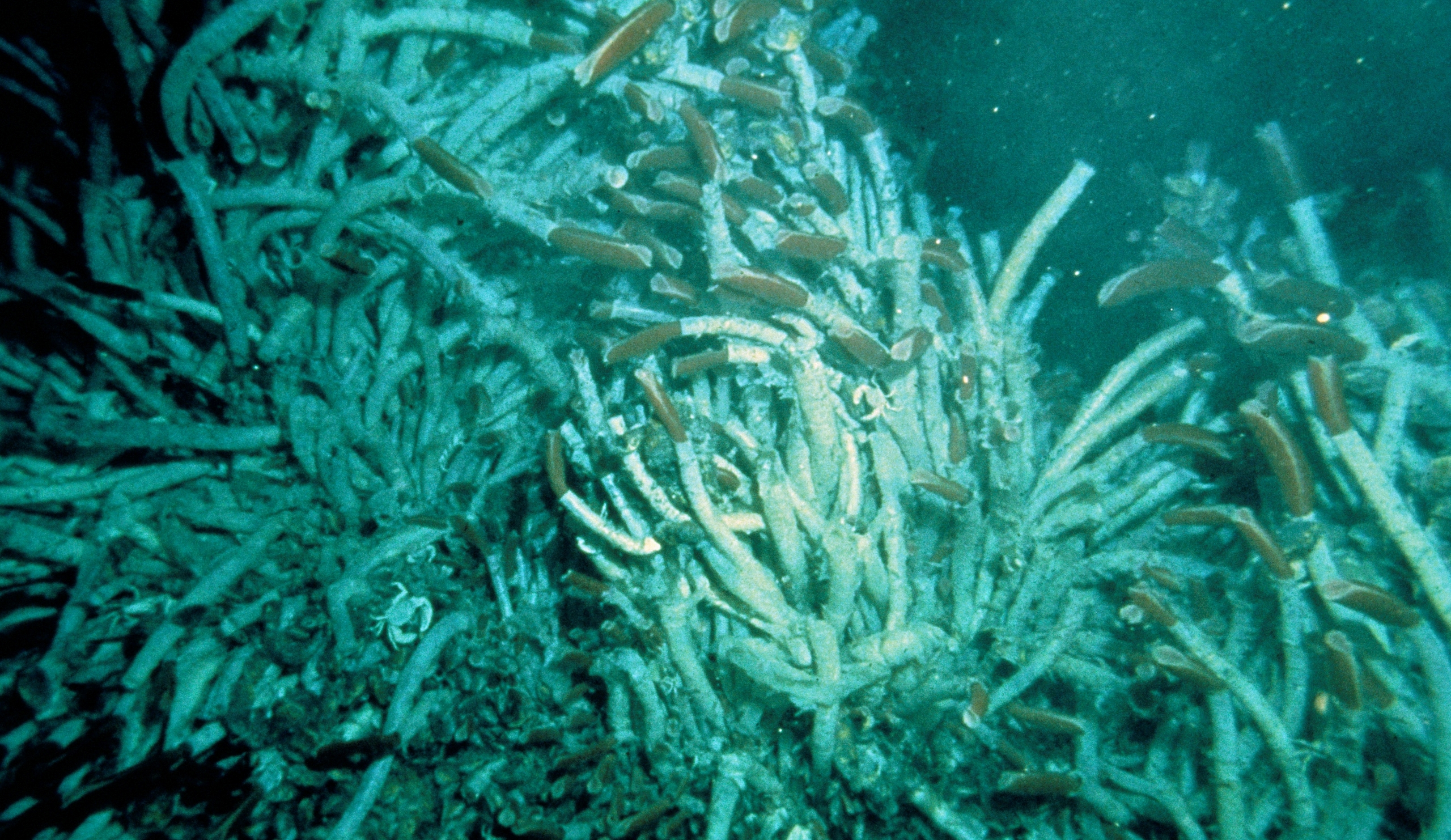 Tubeworms on the ocean floor. (Image credit: Ralph White via Getty Images)(opens in new tab)
Tubeworms on the ocean floor. (Image credit: Ralph White via Getty Images)(opens in new tab)
Tube worms are invertebrates that live on the ocean floor. Bacteria in their tubes create sugars from chemicals, which they absorb as food, according to the Woods Hole Oceanographic Institution’s Dive and Discover(opens in new tab) website. Some tube worms live around hydrothermal vents, but the longest-living species are found in colder, more stable environments called cold seeps, where chemicals spew from cracks or fissures in the seafloor, according to the Exploring Our Fluid Earth(opens in new tab) website hosted by the University of Hawaii.
A 2017 study published in the journal The Science of Nature(opens in new tab) found that Escarpia laminata, a cold-seep species of tube worm in the Gulf of Mexico, regularly lives up to 200 years, and some specimens survive for more than 300 years. Tube worms have a slow metabolism and few natural threats (such as predators), which has helped these creatures evolve such long life spans.
5. OCEAN QUAHOG CLAM: 500+ YEARS OLD
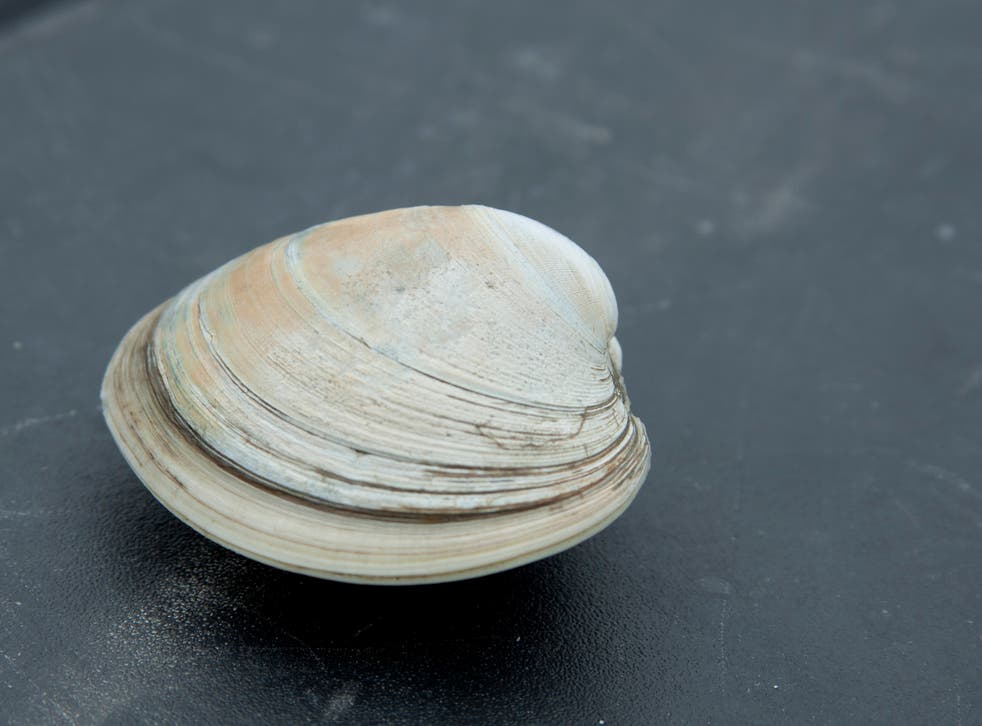
A quahog clam on a beach in Cape Cod in Massachusetts. (Image credit: Gabe Dubois/Shutterstock.com)(opens in new tab)
Ocean quahog clams (Arctica islandica) inhabit the North Atlantic Ocean. This saltwater species can live even longer than the other bivalve on this list, the freshwater pearl mussel. One ocean quahog clam found off the coast of Iceland in 2006 was 507 years old, according to National Museum Wales(opens in new tab) in the U.K. The ancient clam was nicknamed Ming because it was born in 1499, when the Ming dynasty ruled China (from 1368 to 1644).
“In the colder waters surrounding Iceland the Ocean Quahog has a slower metabolism and so grows slowly and may even live for longer than 507 — scientists just haven’t found an older one yet!” Anna Holmes, curator of invertebrate biodiversity (bivalves) at National Museum Wales, wrote on the museum’s website(opens in new tab) in 2020.
4. BLACK CORAL: 4,000+ YEARS OLD
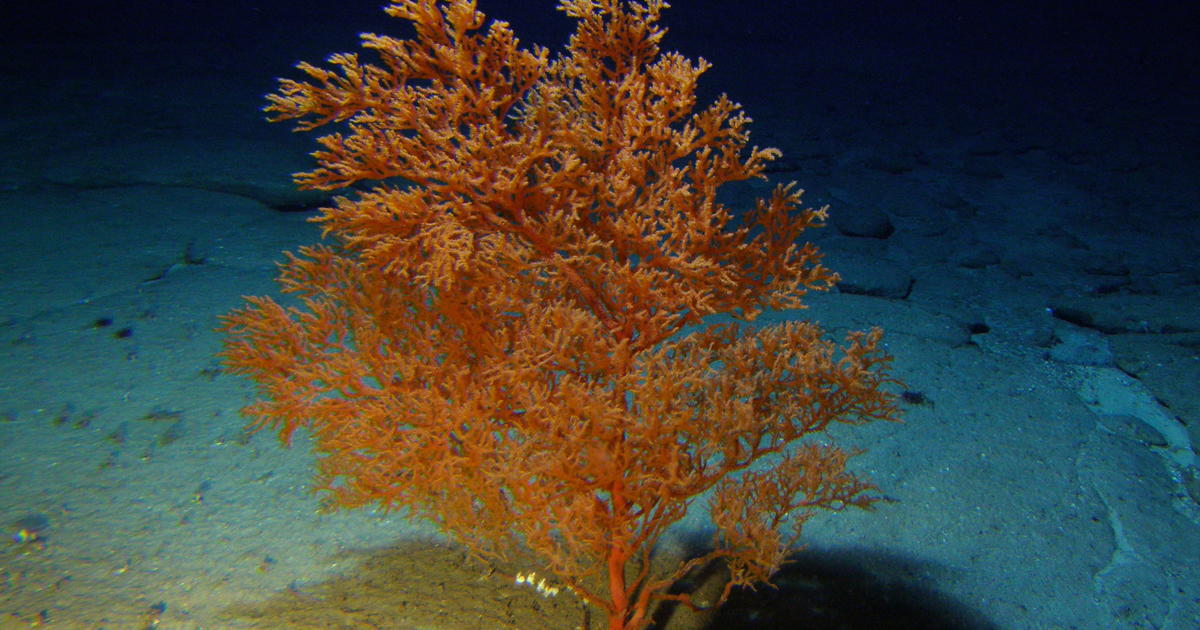
Black corals on the shipwreck of the ship Hardeep near Thailand. (Image credit: Shutterstock)(opens in new tab)
Corals look like colorful, underwater rocks and plants, but they are actually made up of the exoskeletons of invertebrates called polyps. These polyps continually multiply and replace themselves by creating a genetically identical copy, which over time causes the coral exoskeleton structure to grow bigger and bigger. Corals are therefore made up of multiple identical organisms rather than being a single organism, so a coral’s life span is more of a team effort.
Deep-water black corals are among the longest-living corals. Black coral specimens found off the coast of Hawaii have been radiocarbon dated to be 4,265 years old, Live Science previously reported.
3. GLASS SPONGE: 10,000+ YEARS OLD
An illustration of sponges, including Monorhaphis chuni (labeled 2 on the left). (Image credit: History and Art Collection/Alamy Stock Photo)(opens in new tab)
Sponges are made up of colonies of animals, similar to corals, and can also live for thousands of years. Glass sponges are among the longest-living sponges on Earth. Members of this group are often found in the deep ocean and have skeletons that resemble glass, hence their name, according to NOAA(opens in new tab). A 2012 study published in the journal Chemical Geology(opens in new tab) estimated that a glass sponge belonging to the species Monorhaphis chuni was about 11,000 years old. Other sponge species may be able to live even longer.
2. TURRITOPSIS DOHRNII: POTENTIALLY IMMORTAL
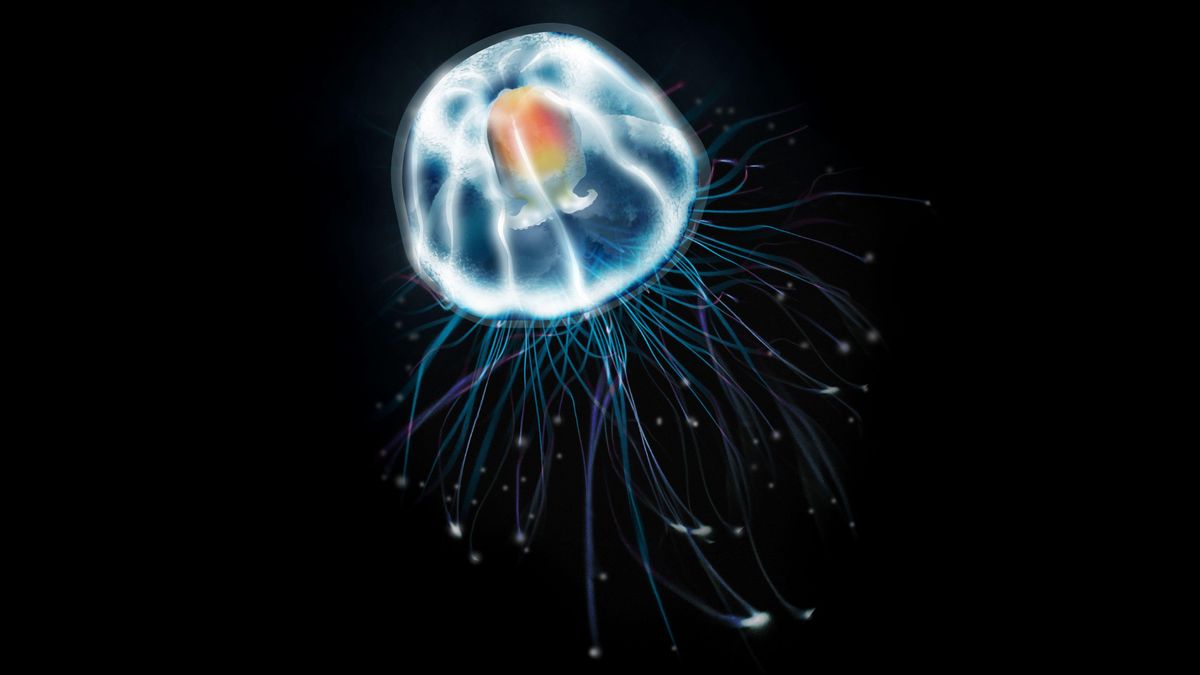 A Turritopsis dohrnii, or immortal jellyfish (Image credit: Adisha Pramod / Alamy Stock Photo)(opens in new tab)
A Turritopsis dohrnii, or immortal jellyfish (Image credit: Adisha Pramod / Alamy Stock Photo)(opens in new tab)
Turritopsis dohrnii is called the immortal jellyfish because it can potentially live forever. Jellyfish start life as larvae before establishing themselves on the seafloor and transforming into polyps. These polyps then produce free-swimming medusas, or jellyfish. Mature T. dohrnii are special in that they can turn back into polyps if they are physically damaged or starving, according to the American Museum of Natural History(opens in new tab), and then later return to their jellyfish state.
The jellyfish, which are native to the Mediterranean Sea, can repeat this feat of reversing their life cycle multiple times and therefore may never die of old age under the right conditions, according to the Natural History Museum(opens in new tab) in London. T. dohrnii are tiny — less than 0.2 inch (4.5 millimeters) across — and are eaten by other animals, such as fish, or may die by other means, thus preventing them from actually achieving immortality.
1. HYDRA: POTENTIALLY IMMORTAL
/https://tf-cmsv2-smithsonianmag-media.s3.amazonaws.com/filer_public/fa/e7/fae74063-921f-4672-8c8b-46c327731696/gettyimages-1291353038.jpg)
Hydras can regenerate lost body parts — even their heads. (Image credit: Choksawatdikorn/Science Photo Library/Getty Images)(opens in new tab)
Hydra is a group of small invertebrates with soft bodies that slightly resemble jellyfish and, like T. dohrnii, have the potential to live forever. These invertebrates are largely made up of stem cells, which continually regenerate through duplication or cloning, so these animals don’t deteriorate as they get older. They do die under natural conditions because of threats such as predators and disease, but without these external dangers, they could keep regenerating forever.
“They don’t seem to age, so potentially, they are immortal,” Daniel Martínez, a biology professor at Pomona College in Claremont, California, who discovered the hydra’s lack of aging, previously told Live Science.
source: livescience.com





